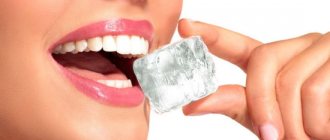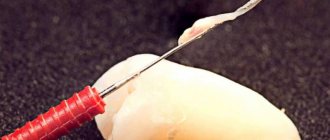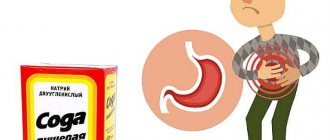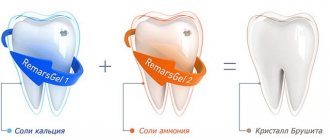What does a bare nerve look like?
For some, it is not at all clear what an exposed tooth nerve means. The nerve, or in other words, the pulp, is reliably protected by hard tissues, that is, located under the enamel-dentin layer. This important organ is penetrated by many nerve plexuses, capillaries and vessels. In general, it is he who is responsible for the sensitivity of the tooth, promotes its full blood supply, makes it alive, strong and functional.
Look at the photo below and you will understand what the exposed nerve in the tooth looks like and what it looks like when it is removed from the reamed cavity of the affected element in the dental office. Outwardly, it looks like a bundle, intertwined with pinkish or red threads, with a small round head at the end. It’s not for nothing that it’s called the heart of the tooth. Without it, the full nutrition of hard tissues ceases, so they fade, darken, become fragile and, without additional protection in the form of artificial restorations (inlay, crown), quickly collapse.
Causes of pathology
Could the most sensitive part of the tooth be exposed? Yes, access to it opens when hard tissues are destroyed, which most often happens due to untreated caries. First, bacteria and their metabolic products corrode the enamel-dentin layer, forming a large cavity. And then they penetrate into the pulp through the dentinal tubules[1], causing inflammation and provoking pulpitis, periodontitis and other more severe complications, for example, periostitis, abscess. Sometimes the pulp is exposed under the influence of directed mechanical force, injuries and blows received in the area of the maxillofacial apparatus.
On a note! Some complain about exposed dental nerves and are interested in how to relieve pain that occurs from cold, sour, sweet and hot foods, or mechanical stress. This pain is of a sharp, short-term nature. In fact, in this case, we are most often not talking about caries and pulpitis, but about such a phenomenon as enamel hyperesthesia.
Signs of pathology
For many, the concept of an exposed nerve in a tooth is inextricably linked with severe pain. Sometimes the pain is simply unbearable, and it also radiates to the jaw and temples, ears, cheekbones and eyes. Very often, severe discomfort occurs at night and is long-lasting. Pain occurs not only from all sorts of irritating factors (for example, eating cold and hard foods), but also arbitrarily.
However, if the disease, most often pulpitis, becomes chronic, then the unpleasant sensations seem quite tolerable, the pain becomes muted, and at times it does not bother you at all. That is, all symptoms disappear.
If the nerve in the tooth is exposed, what other symptoms, besides acute pain, can be noticed. As a rule, in the causative unit of the row there is a large carious cavity where pieces of food can get stuck. Near the affected element, the gums often swell, turn red and become painful. A small swollen pimple or ulcer may appear on the mucous membrane, from which pus is released.
Prevention
The process of exposing the tooth root, as a rule, is quite long and occurs gradually and at first unnoticeably. The problem is most typical for people aged 40 years and older, which is associated both with age-related changes in tissue and with the influence of other factors listed above. That is why it is so important to pay the most serious attention to timely prevention of the disease. Some of the main preventive measures that dentists recommend to take include:
- maintaining oral hygiene;
- getting rid of smoking and other bad habits;
- the right choice of personal hygiene products (it is recommended to give preference to medium-hard toothbrushes or electric brushes).
When the first symptoms of the disease appear, you must immediately consult a specialist - a dentist. This will allow you to avoid further risks and problems associated with gum inflammation, root exposure and the development of periodontitis.
First aid rules for this problem
If you have a severe toothache, then the first thing that can and should be done at home is to relieve the unpleasant symptom. However, it is important to remember that this will only bring momentary relief, and after a few hours the problem will return again, perhaps with even greater force.
Let's look at what can be done.
Take painkillers and non-steroidal anti-inflammatory drugs
Use those medications that work best for you and are not contraindicated due to the characteristics of your body. The choice of over-the-counter products is large: “Ibuprofen”, “Ketanov”, “Nise”, “Spazmalgon”, “Nurofen”, “Analgin”, “Tempalgin” and others. The main thing is to use the medications according to the instructions and no more than 4-5 days in a row. Drugs from the NSAID group (non-steroidal anti-inflammatory drugs) not only eliminate severe pain, but also reduce the intensity of the inflammatory process.
Take into account the fact that with pulpitis, the analgesic effect may occur more slowly and pass faster than indicated in the instructions for the medications, or for other types of pain. And as the inflammatory process progresses, those remedies that previously brought relief will be completely ineffective.
Rinse your mouth thoroughly
First, it will reduce the amount of harmful bacteria in your mouth. Secondly, it will help to wash away pieces of food (if there are any) from the deep carious cavity, which can increase pain or even cause it. Thirdly, in this way you can reduce the intensity of pain.
Decoctions of chamomile, sage, oak bark, and oregano are best suited for rinsing. A soda-salt solution with a drop of iodine will help relieve the condition for a short time. Solutions can slightly reduce the symptoms of inflammation and have a pronounced antiseptic and regenerating effect. For more information on how to properly rinse your mouth during inflammation and pain, see the feature article on the website.
Use safe traditional recipes
Many people wonder how to numb the exposed tooth nerve. This is especially true if the previous two paragraphs of the article, with which everyone usually starts, turned out to be not so effective, which is far from uncommon with pulpitis.
You can try the following:
- apply a plantain leaf to the element of the row that is bothering you and hold for about 20 minutes,
- make an application with essential oil: tea tree, calendula, and clove oils are suitable. Before using the composition, dilute it with a few drops of water so as not to cause irritation of the mucous membranes,
- rinse your mouth with a decoction of onion peels,
- tie a piece of garlic to your wrist,
- dilute hydrogen peroxide in water, moisten cotton wool and apply to the destroyed unit,
- massage your earlobes,
- apply a cold compress externally to your cheek for 10-20 minutes: do not forget to wrap the ice in a towel so as not to cause frostbite to the tissues.
So, one of the listed methods helped, and the toothache went away. But the exposed nerve still remains, so you shouldn’t delay your visit to the dentist.
What to do if the dental nerve is exposed
Exposure of the nerve is accompanied by severe pain. This indicates an urgent need to seek help from a dentist. There are situations when acute pain began at night or on a weekend. There are often cases when a patient cannot go to the clinic at the moment due to certain life circumstances.
Why can our articles be trusted?
We make health information clear, accessible and relevant.
- All articles are checked by practicing doctors.
- We take scientific literature and the latest research as a basis.
- We publish detailed articles that answer all questions.
The sensations are very painful, so the first action is to calm the pain. Painkillers are used for this.
Do not apply a hot or warm compress to the sore spot. This can give rise to increased formation of pus. The process will worsen, and subsequent treatment will require surgical intervention.
The use of analgesics and rinsing are temporary measures, the purpose of which is to reduce pain and prevent inflammation from penetrating into the internal tissues. As soon as possible, even if the tooth hardly hurts, you need to visit the dentist’s office.
Going to the dentist is the best solution for this pathology
We tell you what to do if the nerve of the tooth is exposed. The doctor will help you get rid of not only painful symptoms, but also the problem itself that provokes them.
On a note! If you have an exposed tooth nerve, then before understanding how to treat, the doctor will use a visual examination and x-ray to determine the extent of the damage.
Conservative (biological) treatment method with pulp preservation
In case of an inflammatory process that has slightly affected the pulp, and in the absence of negative changes in the periodontal tissues, conservative therapy with preservation of the nerve is possible. In this case, the specialist will simply clean the root canals and put medications with calcium hydroxide inside and install a temporary filling. Next, dynamic observation is carried out. In case of positive dynamics, the temporary filling is replaced with a permanent one. From the first visit to the clinic to the final one it can take from several weeks to 6 months.
Surgical methods
In most cases, the pulp is severely inflamed because it has time to be exposed to harmful bacteria while you are wondering whether to go to the doctor or wait a little and be patient. In this case, the specialist, as a rule, decides to remove it partially (vital amputation) or completely (extirpation).
Most often, the nerve is completely removed. But the procedure for killing it and removing it from the tooth cavity can be carried out in different ways. The most modern - vital extirpation, that is, the living pulp is removed - is performed in one visit to the dental office, under local anesthesia, using special tools - files and pulp extractors.
However, many clinics still practice treatment in two stages. If a tooth hurts or a nerve is exposed, this is what the doctor will do:
- at the first stage: the specialist drills out hard tissues, opens access to the root canals, puts a special devitalizing paste inside and closes the cavity with a temporary filling. Some pastes contain arsenic, but they are less toxic and safer than those used previously, and also contain lidocaine for pain relief and antiseptics. Killing of the pulp usually occurs within 1-3 days. Also today, in some clinics, arsenic-free formulations are used for these purposes, which are considered even safer - these can remain in the mouth for up to 10 days,
- at the second appointment: the temporary filling and paste are removed, the dead pulp is removed, the tissues and canals are well cleaned, and a permanent filling is placed. X-ray control is required, with the help of which the doctor can evaluate the quality of the work done and make sure that the pulp is completely removed.
“I faced unbearable pain due to an exposed nerve. The pills did not help relieve the pain at all. The clinic immediately offered to remove the pulp and then put a crown on top. Otherwise, they said, the tooth will not last long in this condition. They removed the pulp in one sitting, immediately put on a temporary crown, and 2 weeks later - a permanent one.”
Ris, review from yell.ru
Diseases that provoke painful pulsation in the tooth
Suddenly got a toothache? At the appointment, the dentist usually diagnoses one of the following diseases.
Caries
First, with carious tooth decay, throbbing pain periodically occurs after eating hot/cold food, eating sweets or sour fruits. This means that the pathological process has reached the dentin (the tissue located under the tooth enamel). As the carious cavity deepens, the intensity of the pain increases, but after 10-15 minutes everything goes away without taking painkillers. If you do not consult a dentist in time, the dental crown will be completely destroyed very quickly. However, at this stage it is possible to save not only the tooth, but also avoid removing the nerve.
Important! Sometimes only a small hole is noticeable in the tooth enamel. However, the carious process spreads inside the tooth. A sign of deep caries (in addition to pain) is bad breath.
For caries, it is not recommended to put analgin into the tooth. This drug, although it effectively relieves pain, instantly destroys tooth enamel. It is impossible to save a tooth that is more than 2/3 destroyed.
Pulpitis
Inflammation of the pulp (neurovascular bundle) is a complication of deep caries. During the day, throbbing pain is quite tolerable, it occurs only after eating or inhaling cold air, and is easily relieved with painkillers. By nightfall the tooth begins to twitch.
The worst tactic for pulpitis is to drown out the pain with strong analgesics and again postpone going to the dentist in the morning. It makes no sense to endure pain day after day; in any case, the nerve will have to be removed. However, when the pulp is removed, the tooth stops receiving nutrition, the enamel and dentin become less dense.
Even a filled tooth with the nerve removed is short-lived. Therefore, we recommend that you contact the Matiss Dent dental clinic as soon as painful sensitivity to hot/cold occurs or a small dark spot appears on the enamel.
Periodontitis
If the infection penetrates deeper, a fibrous compaction or granuloma forms at the apex of the root. In this case, the pulsation is usually painless and intensifies when chewing food. The patient feels as if the tooth has lengthened.
With the development of a purulent process, a periapical abscess (cyst) is formed. The throbbing pain in the tooth increases (it jerks more and more), the gums swell, and painkillers only slightly ease the pain. Possible increase in temperature. Sometimes after a few days the abscess forms a white “bump” on the gum.
Important! Under no circumstances should you open a root cyst yourself. Any manipulations at home are fraught with the development of perimandibular abscess and sepsis.
Previously, the cyst was removed along with the tooth. However, modern dentistry makes it possible to preserve the root. The abscess is opened through the root canal (the capsule is scraped out with a curette or dissolved with special substances) or removed surgically in combination with antibiotics. The resulting cavity is filled with a paste that restores bone tissue. The tooth is built up using pins, then a crown is installed. An indicator of successful removal of a periapical abscess is that an x-ray taken 6 months later shows no evidence of new cyst formation.
Periodontitis
Inflammation of the periodontium (supporting apparatus of the teeth) is the most insidious dental disease. At the initial stage, the pathology is manifested only by increased bleeding of the gums after brushing teeth, eating carrots and other solid foods.
Over time, degenerative changes occur in the gums: the spaces between the crowns increase, the roots of the teeth become exposed, and a metallic taste is constantly felt in the mouth due to increased bleeding. Even brushing your teeth frequently does not eliminate bad breath. Later, the teeth begin to loosen, ache and throb even after eating soft food. The tissues around the tooth become inflamed, and pus and blood are released from the gum pockets. Body temperature often rises and general health worsens.
When bone tissue is involved in the pathological process, the only treatment method is surgery. After professional cleaning and removal of tartar, a flap operation (gum excision and subsequent plastic surgery) is performed. Implantation of bone tissue substitutes (osteoplasty) is often required.
Pericoronitis
Difficult teething provokes swelling and redness of the gums, painful pulsation, and discomfort when swallowing. Most often, a similar picture is observed during the eruption of wisdom teeth. Severe pain does not allow you to open your mouth wide and eat food calmly. Due to the accumulation of food debris under the “hood”, pus forms. You shouldn't endure pain. The dental surgeon will excise the “hood” in 5 minutes, which will ensure painless tooth eruption.
What actions at home can aggravate the problem?
If there is toothache and an exposed nerve, not everyone tries to see a doctor right away. Some resort to all sorts of pain relief methods. But here you need to know when to stop and not cause even more harm to your health. Let's consider what actions can have negative consequences:
- warming up the inflamed area: this will further increase the pain and cause inflammation to progress due to the rush of blood, as well as the spread of bacteria along with blood flow to nearby tissues,
- rinsing with hot solutions and decoctions: hot water can injure the mucous membranes and lead to exactly the same effect as warming procedures,
- applying a crushed aspirin tablet to the tooth: this drug, when applied externally, can cause severe burns and irritation of the mucous membrane,
- lotions with alcohol tinctures: similar to aspirin, they will dry out and damage the mucous membrane,
- being in a horizontal position: when the head is at the same level with the body, blood flow and pressure increase, due to which the pain only becomes stronger. To make the situation easier, on the contrary, you need to place your head higher than your body. You can use a high pillow for this.
What is strictly forbidden to do
There are also several strict restrictions and prohibitions that must be observed to avoid unwanted consequences. Here are the main ones:
- you can’t heat the causal area - no hot compresses, which only intensify the pain and provoke the spread of inflammation,
- you should not take a horizontal position - this will increase blood flow to the painful area, which will make the unpleasant sensations even more intense,
- Under no circumstances should you use needles - some try to pick out the cavity themselves, but this is strictly prohibited. Otherwise, you can provoke severe bleeding and even infection.
In no case should you attach a heating pad to an inflamed nerve.
Killing and removing a nerve from a tooth, even in dentistry, is considered a serious procedure that requires the proper experience and dexterity from a specialist. Therefore, in case of inflammation of the pulp, the help of a qualified specialist – an endodontist – is required. This is not a case where you can do it on your own. Don't risk your health.
1According to information at the office. manufacturer's website: vladmiva.ru.
Is it possible to remove the nerve yourself so as not to suffer?
Not everyone is only interested in how to calm the exposed nerve of a tooth if it hurts. Some seriously believe that it can be killed at home in order to immediately “kill two birds with one stone”: get rid of the need to visit a doctor and eliminate the obsessive pain syndrome.
Let's consider what unreliable sources on the Internet advise in this regard: place concentrated vinegar, iodine or alcohol, gunpowder, arsenic, garlic and pepper with salt directly into the tooth cavity. And also try to open the cavity yourself and clean out the pulp with a sharp needle. Here's what dentists say about what this means.
Expert opinion
Elena Vladimirovna Orlova
Specializations: Dentist-therapist, endodontist
Experience: 32+
“The methods proposed to kill the nerve at home are extremely dangerous. All of them can lead to severe injuries to the tissues surrounding the tooth, chemical burns, and intoxication of the body. Neighboring teeth may also be negatively affected, which will lead to the need to remove them and undergo expensive prosthetics. Against the background of such manipulations, traumatic gingivitis and periodontitis of the gums can develop. All this today can be avoided by timely consultation with a doctor, conservative measures and relatively low costs.”
Expert opinion
Tatyana Vitalievna Varlamova
Specializations: Dentist-therapist
Experience: 6+
“The individual reaction of each individual person to such extremely inhumane methods of depulpation can be unpredictable, but always negative. In the process, you can severely injure blood vessels, cause bleeding, and provoke acute allergies. Such experiments can lead to loss of sensitivity and infection of healthy tissues.”
Some people believe that you can kill the nerve simply by “passing” the pain. That is, if you endure it for a long time, sooner or later the pain will go away on its own. Indeed, this is almost true. The disease will become chronic, or the pulp will become necrotic, and therefore the pronounced symptoms will no longer bother you. However, the inflammatory process and bacteria will not go away; moreover, they will begin to look for a new “victim”.
The latent inflammatory process is very dangerous, as it can lead to a number of serious pathologies: osteomyelitis, phlegmon, damage to internal organs and sepsis. The tooth itself will become unviable and may crack and crumble from any, even minor, impact.
Tooth hurts after nerve removal
After treatment and the end of anesthesia, the pulpless tooth may hurt. The reason may be temporary, since removal of the nerve is a serious intervention in the structure of the tooth. Usually, after a few days, all unpleasant symptoms disappear. If after two weeks the tooth continues to ache, and the pain even intensifies, consult your doctor immediately. Perhaps it’s all about the neighboring tooth, the pain from which radiates to the recently cured one.











